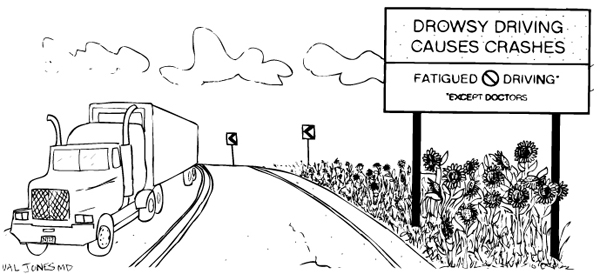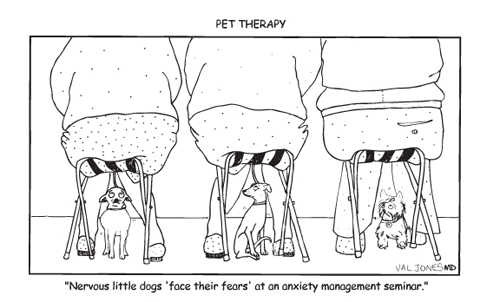June 21st, 2009 by Dr. Val Jones in True Stories
4 Comments »
 As many DC residents know, the local subway system has launched an etiquette campaign to insure that priority seating is given to the elderly and people with disabilities. The four seats nearest the center doors are clearly marked with “priority seating” signs, including “You don’t have to stand for this” posters. Conductors even read scripted reminders to riders at various stops.
As many DC residents know, the local subway system has launched an etiquette campaign to insure that priority seating is given to the elderly and people with disabilities. The four seats nearest the center doors are clearly marked with “priority seating” signs, including “You don’t have to stand for this” posters. Conductors even read scripted reminders to riders at various stops.
So how is this campaign working out? I snapped a photo of this guy sitting in the priority section (and taking up 2 seats with his bags) – just after an elderly man with a cane limped by.
I gave him the evil eye… he returned the glare.
So I decided to feature him on my blog.
As a physician who works with people with disabilities this really gets my goat.
June 16th, 2009 by Dr. Val Jones in News, Quackery Exposed
1 Comment »

A resistant strain of bacteria –created by partially effective counterfeit antibiotics – doesn’t need a VISA and passport to get to the U.S.
– Paul Orhii, National Agency for Food and Drug Administration and Control, Nigeria
I attended a conference in DC yesterday called, “The Global Impact of Fake Medicine.” Although I had initially wondered if homeopathy and the supplement industry would be the subjects of discussion, I quickly realized that there was another world of medical fraud that I hadn’t previously considered: counterfeit pharmaceuticals.
Just as designer goods have low-cost knock-offs, so too do pharmaceuticals and medical devices. Unfortunately, counterfeit medical products are a higher risk proposition – perhaps causing the death of hundreds of thousands of people worldwide each year.
It is difficult to quantify the international morbidity and mortality toll of counterfeit drugs – there have been no comprehensive global studies to determine the prevalence and collateral damage of the problem. But I found these data points of interest (they were in the slide decks presented at the conference):
– Pfizer Global Security raids resulted in seizure of 11.1 million counterfeit tablets, capsules and vials in 42 countries in 2008. Pfizer seizure of counterfeit drugs in 2008 were up 28.9% over 2007.
– Within a 7 day period, 250 different Internet-based Viagra purchases were seized in a single mail center. After chemical testing, it was determined that 100% of the tablets were counterfeit.
– Anti-malarial counterfeit tablets are common in East Asia and Africa, threatening to derail the US goal of decreasing malaria mortality by 50% in 15 countries. Chemical testing in Africa revealed that 20-67% of chloroquine failed content quality checks, and 75-100% of sulfadoxine-pyrimethamine tablets (for pregnant women) was not absorbable. Tests conducted in Cambodia in 2003 demonstrated that 27% of anti-malarials were counterfeit with quinine being 77% counterfeit and tetracycline 20% counterfeit.
– Some “Canadian” mail order pharmaceutical prescriptions have very circuitous routes of manufacture, packaging, and delivery. One batch was manufactured in China transported to Dubai, then to London, then filled in Bahamas, sent to the UK, and then mailed to the US.
– Counterfeit drugs are estimated to make up 30% of Kenya’s total pharmaceutical products, 20% of India’s, 10% of Russia’s, and <1% of US.
– Most counterfeit medications found in the US supply chain seem to be introduced through Internet purchases.
– The global active pharmaceutical ingredient production was estimated at $70 billion in 2008. China and India account for 60% of production
– 70% of all generic medications are manufactured in India. It is estimated that the Indian global generic business will grow to >$70 billion by 2009. India and China have much less stringent safety and regulatory standards, which provides fertile soil for counterfeiters.
– 25 years ago, most counterfeit medications were placebos. Today’s counterfeits have some active ingredients because sophisticated counterfeiters are looking for repeat business.
This conference provided a sobering account of the counterfeit pharmaceutical industry, tracking its exponential growth over the past two decades. That growth appears to be fueled by the outsourcing of pharmaceutical manufacturing plants to countries with limited regulatory oversight, and the sale of medications via the Internet. So far, poor quality and contaminated prescription drugs are rarely found in US pharmacies – but that could certainly change. The FDA, US Department of Commerce, and US Agency for International Development are calling for an international public-private partnership to stem the tide of counterfeit drug manufacturing. But with little to lose (fines for counterfeit drug manufacturing are notoriously light) and much to gain (a slice of a multi-billion dollar industry), it’s unlikely that the counterfeiters are going anywhere anytime soon.
![[Slashdot]](https://slashdot.org/favicon.ico)
![[Digg]](https://digg.com/favicon.ico)
![[Reddit]](https://reddit.com/favicon.ico)
![[del.icio.us]](https://del.icio.us/favicon.ico)
![[Facebook]](https://www.facebook.com/favicon.ico)
![[Technorati]](https://technorati.com/favicon.ico)
![[Google]](https://www.google.com/favicon.ico)
![[StumbleUpon]](https://www.theskepticsguide.org/sgublog/wp-content/plugins/stumbleupon.jpg)
*This blog post was originally published at Science-Based Medicine*
June 9th, 2009 by Dr. Val Jones in Health Policy, Humor
No Comments »
I’ve been attending a series of health policy conferences recently – and twittering them live. I’ve heard a lot of smart ideas and a lot of not-so-smart ideas. For your consideration, I offer you my best and worst recent health policy quotes:
The best quotes:
1. Evan Falchuk, Best Doctors: “Since the leading cause of misdiagnosis is a failure of synthesis – a failure by the doctor to put together available information in a way that leads them to the right conclusion – our system ought to be built around helping make sure this happens each and every time.”
2. Aneesh Chopra, Federal CTO: “HIT should not be in a box unto itself – put in a corner, making a capital-sucking sound.”
3. Clay Shirky, New Media Guru: “The problem is that, since we all die eventually, everyone will be unhappy with their healthcare at some point. This creates a social dilemma that’s neither transitory nor small. First, there will always be snake oil salesmen peddling ‘eternal life,’ and second, there will always be an unhappy faction who rail against the medical establishment.”
4. Joshua Ofman, Amgen, on comparative clinical effectiveness research: “We don’t want 2 different evidence standards. One to gain market access and a second to lose market access… There is a role for observational data to gain insights. There is a great allure of large, readily accessible databases that are fast – but the power and speed cannot overcome bias and confounding. ”
5. Vivek Kundra, Federal CIO: “We need to bake security into the architecture that we purchase from the private sector. The sprinkler system is part of any house you purchase – you don’t have to add it later.”
The Worst Quotes:
1. Senator Tom Harkin: “The NCCAM has failed to do their job of validating complementary and alternative medicine therapies.”
2. Senator Max Baucus: “Going to the doctor is like buying a car, except buying a car is a lot more fun.” Bonus quote: “If men liked shopping, they’d call it research.” [???]
3. Theresa Cullen, CIO, Indian Health Service : “At some point we’ll have to tell providers ‘you have to use EHR, we’ve drawn a line. If you don’t use it you’ll have to leave.'”
4. Sean Tunis, Center for Medical Technology Policy: “Randomized Clinical Trials can be designed with generous inclusion and exclusion criteria. Their limited inclusion criteria are not a permanent defect… We can’t wait 5 years for RCTs to be done. We have to find new methods that we can use (a “silver level of evidence” rather than the RCT “gold level”) to help inform our care decisions.”
5. Congressman Pete Stark: “I’m sick of rich doctors driving up in their Porsches saying ‘I’m pulling out of Medicare.’”
 As many DC residents know, the local subway system has launched an etiquette campaign to insure that priority seating is given to the elderly and people with disabilities. The four seats nearest the center doors are clearly marked with “priority seating” signs, including “You don’t have to stand for this” posters. Conductors even read scripted reminders to riders at various stops.
As many DC residents know, the local subway system has launched an etiquette campaign to insure that priority seating is given to the elderly and people with disabilities. The four seats nearest the center doors are clearly marked with “priority seating” signs, including “You don’t have to stand for this” posters. Conductors even read scripted reminders to riders at various stops.












